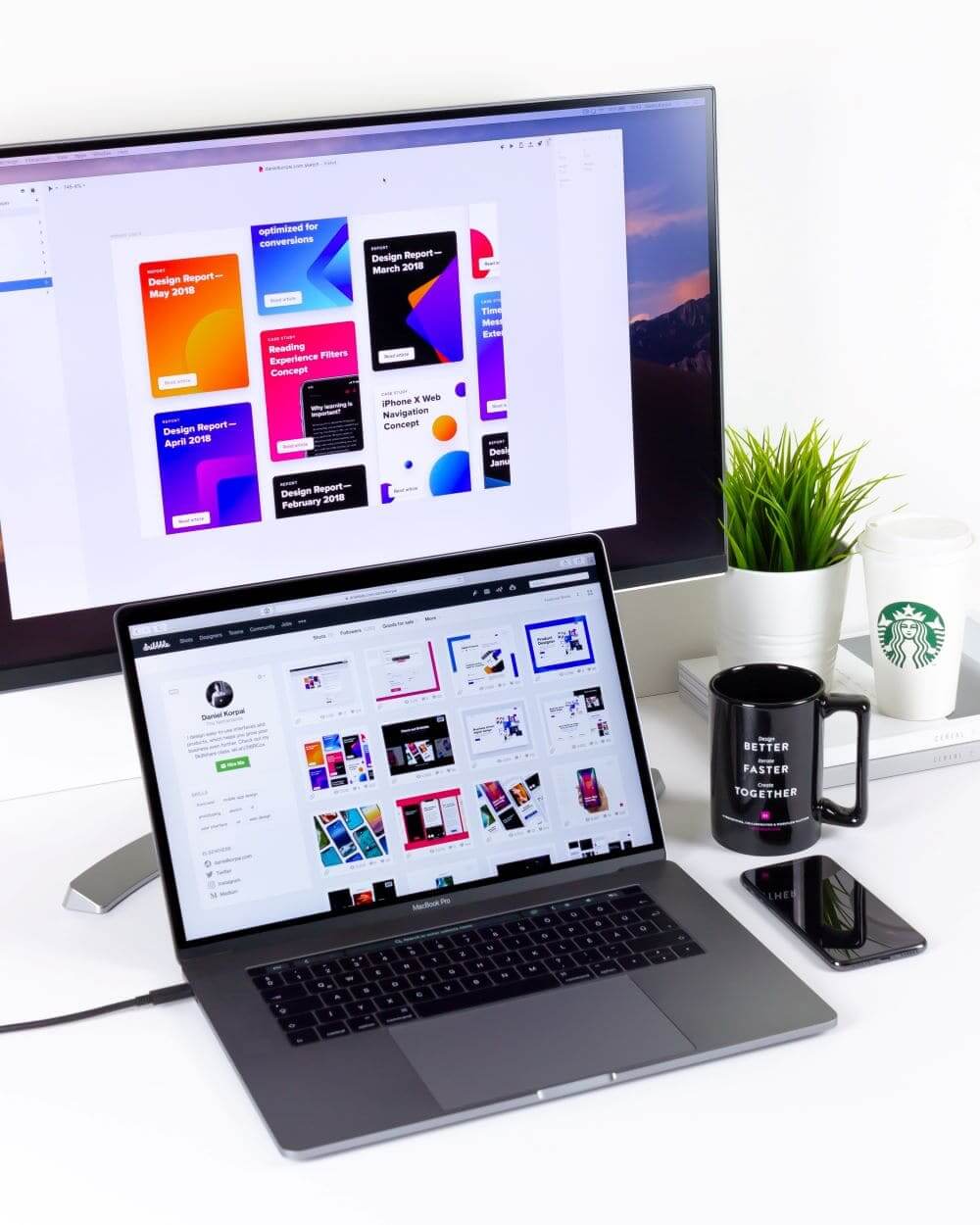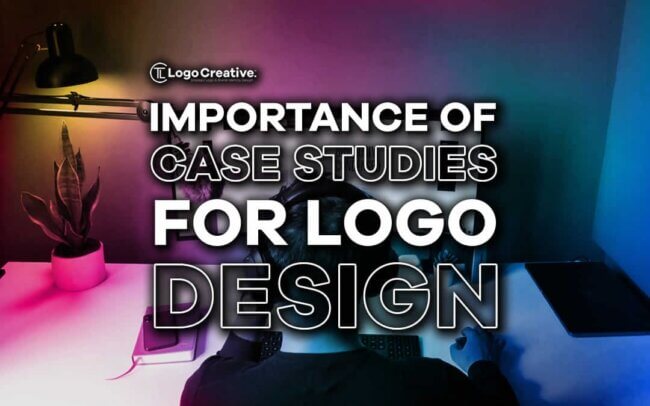Case studies for logo design are crucial, much-overlooked, and often under-utilised tool within a logo designers marketing strategy. In this article we look at the Importance of Case Studies for Logo Design.
Most logo design case studies are framed around subjective descriptions whereas they should include more essential, objective content that has resonance and impact with prospect clients.
There is also a lack of process within a lot of logo design case studies and how the idea was formed and reasoning behind the final direction, why certain elements where chosen and why they exist for that particular business?
Thought process is a skill and a powerful tool, clients like to know how and why ideas are formed and the purpose behind them and how it impacted the clients business from a metrics standpoint.
Now, there is no need to be worried, we are not going to be talking about those intensive, comprehensive, endless and rather dull logo design case studies, we are going to be focusing on the short, simple ones that focus on a particular project, with emphasis on how the logo designer measurably impacted it’s clients business and the problem the logo design or identity design system solved.
Table of Contents
Why Logo Design Case Studies Are Effective

Many logo designers develop case studies and include too many visual mock-up’s, and overly descriptive project descriptions that don’t resonate with clients at a business level.
Logo Designers tend to use case studies to talk about how great their work is, their process, why a certain visual strategy was chosen, what the project theme was, or how much the client subjectively responded to it without any mention of how it solved a problem and its impact on the clients business.
This strategy takes significant time, yet has little value to prospective clients.
However, if you switch your mindset to write logo design case studies that resonate with clients, you’ll find that they are indispensable, multi-tasking tools that can be used in your capabilities materials, website, new business proposals and pitches, public relations outreach, and even inspire your social media posts.
The value of strong, well-crafted logo design case studies is immense, as they:
- Champion and position your work and services as a value-added investment, not just a cost or expense
- Provide evidence of your creative contribution to a client’s bottom-line in other words, they rationalise the client’s cost benefits or return on investment (ROI)
- Provide tangible evidence (ROI) that clients can use to justify their budget internally.
- Makes clients look good to their boss, colleagues, and peers.
- Boost team morale and retention
What Should a Logo Design Case Study Include?
A Client-driven case study strategy essentially includes the following:
Project Images
While this may be obvious, you still should edit and be selective about what images you feature. The images you choose should speak for themselves and speak volumes about the work. With use of great imagery, you won’t need to use endless descriptive words to describe the project.
Problem/Challenge Statement
This is a short statement describing what the clients business-related challenge was that you needed to solve.
It may focus on such topics as market influence, business objectives, desired end-result/ action, target audience/ market, competitive challenges, etc.
Answer these questions:
- What was the client trying to achieve?
- What were their business objectives?
List of Services
This is a list of what the end deliverables was that you created for that particular client/ project (e.g. strategy, naming, messaging, identity system, promotional materials, website, apps, etc.)
You don’t need to list every component you provided, you can generalise by media instead (e.g. print, digital). Ideally, the list should align with how you categorise work on your website, as this allows you to tag the type of deliverable with other related projects.
Strategy and Approach
Designers spend way too much time writing lengthy copy for this area, yet it is also the section that has the least relevance to a prospect. Unless you have a truly compelling story to tell, you can often eliminate this section entirely.
But, if you wish to describe your unique strategy, or know that your clients find it valuable, then do so as concisely as possible and try to provide information that prospects can appreciate.
They don’t care why you art directed a photo a certain way, or why you chose a font, but they may care about the overarching visual strategy or themes that drove those decisions.
Solutions/ Results/ Outcomes
This is the most important section of any logo design case study and should be its central point of focus.
Alternate Approaches
The following optional approaches or content may also be employed:
Before and After Format
Instead of using the challenges/ solutions format mentioned above, consider using a before and after image format, if appropriate. Visually, this can resonate with prospects and they can really “see” (rather than just hear) how you’ve solved a client’s problem.
Challenge/ solution formats are particularly powerful with packaging, wayfinding, and digital projects, providing of course your work really shows a significant improvement form the original. By the way, this format doesn’t get you off the hook from including success metrics. Sorry!
Testimonials
Including client testimonials somewhere in your promotional materials is a great way for your existing clients to share the love and talk about how great it is to work with you and your team.
However, testimonials shouldn’t be used in lieu of success metrics in your case studies. Because testimonials are subjective, use them sparingly and focus on instead on including tangible success metrics which demonstrate your success more objectively, ultimately having more impact with prospects.
Awards
List only awards won by organisations and competitions that clients recognise and value. Clients are more impressed when a project/ relationship is recognised by their industry or peers, rather than a design organisation or competition.
Success Metrics for Logo Design Case Studies
Creatives avoid asking clients about success metrics (just like they avoid updating their website) and I’ve heard all the excuses, including:
“My client does not track this type of information”
This is confidential information that my client is not willing to share or wish to be made public”
“It’s too late to ask for this information now as the project has already started”
And my personal favourite is:
“My work was only a contributing factor to the project’s success, and therefore it would be dishonest to take full credit for the project’s success”
Really? Have you asked? Usually these excuses are a crutch for designers’ insecurities. They prefer to make these assumptions (or excuses) and thereby avoid asking what they think is a difficult question.
Designers prefer to focus on output, not outcomes. What if they fail? They prefer not to ask about success metrics to avoid the possibility of knowing the project wasn’t successful. And, oftentimes, because they are so busy fighting fires or have moved on to the next project, they forgot and/ or avoid following through.
How Do I Get Success Metrics For Logo Design Case Studies?
The simple and obvious answer is to ask the client! But, first, you must set the stage during the kick-off/discovery/planning phase. During this phase make sure you ask the client these important questions:
“How will you measure the project result or success?”
“When will you measure it?”
These painless questions force the client to think about the expected outcomes more deeply, demonstrate that you want to be a partner in their success, and also help define the “when.” This is important. Once you define “when” put it in your calendar so you can be reminded to follow through to obtain that metric.
No excuses. It also helps to gather, if available, any baseline metrics from the client at the start of the project which you can use upon project completion to measure and compare your impact.
These comparisons also make great before and after stories as well!
The Client Doesn’t Know How to Measure Success
If the client doesn’t know how to measure success, or if they haven’t thought about it, you can be an advisory and consult with them to explore and define ways success can be measured.
One way to be more advisory is to ask the key decision-makers at the start of every project:
“What are the things that will make this project a success?”
Sometimes, their answers, while not metric-driven, can provide good fodder and ways to measure success later.
You may also recommend additional services in which you, or a strategic partner, develop some measurement apparatus/ techniques. Again, no excuses.
Success Metric Checklist for Logo Design Case Studies
The following are ways that clients often demonstrate or measure value, Use the below to inspire conversations during the discovery phase.
- Drove more online traffic (website analytics)
- Generated more sales or sale leads
- Saved the business money/ Changed spending patterns
- Raised awareness (e.g. media attention)
- Increased enrolment, signups, subscriptions, social media followers
- Increased team morale, recruitment, market share
- Affected environmental impact/sustainability
- Motivated target audience
- Changed existing perception
- Repositioned the brand
- Educated clients and employees
- Upgraded brand images appeal
Success Metric Examples for Logo Design Case Studies
The following are examples of metrics I’ve used myself or seen in use within logo design case studies to inspire you.
Print Design
When a business has a new logo/ brand identity design and has new marketing collateral printed.
- 10% reduction in customer inquiries regarding their bill
- 10,000 new subscribers/ members gained this month
- 20% rise in one-year subscriptions after new print design
Brand Packaging
When a brand rolls out a new packaging design.
- 5 private label partnerships secured within the first 3 months of brand launch
- £0 to £10,000 wholesale turnover growth a year after rebrand, with 100% increase forecasted over the next 12 months
Website/ Digital Design
When a brand launches a new website or a digital design.
- 68% of online users have registered for a course
- 1 million page views for monthly average traffic
- 60% increase in page views, 70% increase in unique visits, and a 9% increase in visit duration since the site relaunch
Conclusion
We trust this article will help you improve your logo design portfolio with some interesting Case Studies for Logo Design. When it comes to metrics the number does not need to be huge, don’t be disappointed by potentially small numbers, According to the design business association,
“Sometimes the tiny movement of a measuring needle for a big brand in a mature market can be as impressive as a metric rise for a niche brand in a small or immature category.”
During your next client meeting ask them, or advise them on ways success can be measured and gain some metrics you can include in your next logo design case study.
Join The Logo Community
We hope you have enjoyed the Importance of Case Studies for Logo Design. If you would like more personal tips, advice, insights, and access to our community threads and other goodies, join me in our community. You can comment directly on posts and have a discussion.
*TIP – We use and recommend DesignCuts for all your fonts, mockups and design bundles.


